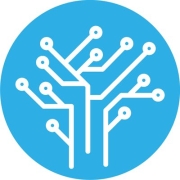IT Alerting and Incident Management streamline communication and response processes, ensuring rapid resolution of IT issues. These tools enhance operational efficiency by automating incident notifications and coordinating team efforts.
Efficient IT Alerting and Incident Management solutions help organizations minimize downtime and maintain service quality. These tools intuitively notify relevant personnel about incidents while providing a centralized platform for tracking and resolution. Users benefit from customizable alerting rules, escalation policies, and seamless integration with existing IT infrastructure.
What are critical features to consider?In industries like healthcare and finance, specific IT Alerting and Incident Management solutions are tailored to meet compliance and regulatory requirements. Customized features and advanced integration capabilities are standard to address industry-specific needs efficiently.
These solutions are helpful for organizations as they ensure quick acknowledgment and resolution of technical disruptions, enhancing service reliability and customer satisfaction.
| Product | Market Share (%) |
|---|---|
| PagerDuty Operations Cloud | 21.5% |
| Opsgenie | 13.0% |
| Rootly | 9.8% |
| Other | 55.7% |


































































IT alerting and incident management tools are a type of software that empowers IT teams to take complete control of their digital environment if malware or another digital threat threatens their organization. Tools of this sort notify administrators of threats and give them options that they can leverage to remedy the problem before it can escalate.
AI can significantly enhance IT Alerting and Incident Management by automating routine tasks and detecting incidents faster through advanced data analysis. Implementing AI allows you to predict potential issues before they escalate, reducing downtime and improving response times. It also helps in prioritizing incidents based on severity and impact, enabling teams to allocate resources effectively.
What are the best practices for effective incident resolution?Effective incident resolution involves clear communication, proper documentation, and utilizing the right tools. Ensure your team has access to a robust ticketing system to track incidents from start to finish. Encourage regular training sessions for your team to stay updated on the latest technologies and methodologies. Regularly review and update your incident management process to adapt to changes within the IT environment.
Why is real-time monitoring crucial for IT Alerting?Real-time monitoring is crucial because it enables immediate detection of issues, reducing the time between incident occurrence and response. This proactive approach helps in mitigating the impact of potential disruptions, ensuring business continuity. By spotting anomalies early, you can address them promptly, preventing minor issues from becoming major incidents that could affect operations.
How do integrations enhance IT Alerting systems?Integrations with other tools, like collaboration platforms and monitoring solutions, streamline IT Alerting by providing a unified view of your IT environment. They enable seamless communication and data sharing among different systems, improving the efficiency of incident management processes. By having all critical information centralized, your team can respond to alerts more quickly and make informed decisions.
What role does automation play in Incident Management?Automation plays a key role in Incident Management by reducing manual effort and minimizing human error. With automation, you can streamline repetitive tasks such as alert notifications, incident escalation, and information gathering. This not only accelerates incident resolution but also allows your IT staff to focus on more strategic initiatives that require human expertise.